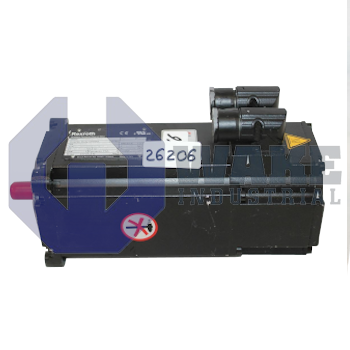Product Description
Bosch Group's SF-A2.0020.030-10.053 servo motor is perfect for severe industrial situations as it has IP67 protection, electronic commutation, and precise control. Brushless servo motors use electronic commutation and have a commutator. Instead of the fixed coils of brushless servo motors, the permanent magnet functions as the rotor (spinning component). The servo motor rotates by controlling the amount and movement of current flowing through each pair of coils separately. This rotates the magnetic fields produced by the coils in a different direction.
The SF-A2.0020.030-10.053 has a 053 version and belongs to the SF series. Permanent magnets are found in the rotor, which is the revolving portion of the motor. These magnets generate motion by interacting with the stator's magnetic fields. The speed and torque capabilities of the motor are directly influenced by the magnets' strength and rotor's design. A motor encoder converts mechanical motion into digital signals, generally via magnetic or optical sensing. These electrical signals enable precise management and tracking of organized systems by providing input on characteristics including location, speed, and rotational direction.
The disk and the detector are the two main parts of the encoder. When the detector moves across the disk's distinctive pattern, it will be capable of interpreting it. The smooth shaft is the motor's backbone. This crucial part serves a variety of purposes, such as transferring electrical energy from the electrical connector to the working machine portion and supporting the motor's rotational parts structurally. The process of braking involves giving the motor more power so that it can provide a braking torque that rotates the shaft in the opposite direction, stopping the motion.


 Wake Industrial Warranty
Wake Industrial Warranty













